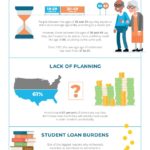By Jenn Hamann
Special to the Financial Independence Hub
Young people are notoriously focused on the here and now. With their entire lives ahead of them, it’s easy for them to lose sight of how important it can be to plan for the future. This is especially true when it comes to retirement planning. The subject is far from exciting, but it can have a tremendous impact on your life as you get older. Failing to have enough retirement savings when you leave the workforce could make it much more difficult for you to enjoy your golden years.
At least you wouldn’t be alone. More than 40 per cent of millennials say they have not yet started saving for the future. The good news is that the sooner you start, the better off you’ll be when the day finally comes.
One of the most significant obstacles when it comes to millennial retirement savings is simply waiting too long to get started. Many younger workers don’t take full advantage of their employers’ 401(k) matching contributions, for example (in the U.S.; the Canadian equivalent are group RRSPs or Defined Contribution pension contributions). The simple math says that the earlier you begin, the more you potentially could have when you cash out your savings.
If you’re one of those who are convinced you still have time to ignore your future, think again. The adjacent infographic shares some sobering facts about the importance of financial planning, as well as some tips you can use to be more prepared.
 Jenn Hamann is Executive Vice President of ToInsure.Me, a leading provider of auto, life and home insurance. She has more than 12 years of experience in the industry, and currently focuses on sales, managing, planning, coaching and retaining business.
Jenn Hamann is Executive Vice President of ToInsure.Me, a leading provider of auto, life and home insurance. She has more than 12 years of experience in the industry, and currently focuses on sales, managing, planning, coaching and retaining business.








